The contribution of inflammatory astrocytes to BBB impairments in a brain-chip model of Parkinson's disease
- PMID: 37339976
- PMCID: PMC10282096
- DOI: 10.1038/s41467-023-39038-8
The contribution of inflammatory astrocytes to BBB impairments in a brain-chip model of Parkinson's disease
Abstract
Astrocyte dysfunction has previously been linked to multiple neurodegenerative disorders including Parkinson's disease (PD). Among their many roles, astrocytes are mediators of the brain immune response, and astrocyte reactivity is a pathological feature of PD. They are also involved in the formation and maintenance of the blood-brain barrier (BBB), but barrier integrity is compromised in people with PD. This study focuses on an unexplored area of PD pathogenesis by characterizing the interplay between astrocytes, inflammation and BBB integrity, and by combining patient-derived induced pluripotent stem cells with microfluidic technologies to generate a 3D human BBB chip. Here we report that astrocytes derived from female donors harboring the PD-related LRRK2 G2019S mutation are pro-inflammatory and fail to support the formation of a functional capillary in vitro. We show that inhibition of MEK1/2 signaling attenuates the inflammatory profile of mutant astrocytes and rescues BBB formation, providing insights into mechanisms regulating barrier integrity in PD. Lastly, we confirm that vascular changes are also observed in the human postmortem substantia nigra of both males and females with PD.
© 2023. The Author(s).
Conflict of interest statement
The authors declare no competing interests. J.L.T. contributed to this article before her affiliation with the Cell Biology R&D at Thermo Fisher Scientific.
Figures
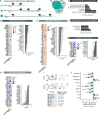
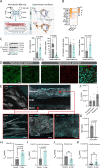
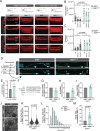

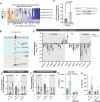
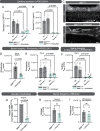


Similar articles
-
Astrocytic VEGFA: An essential mediator in blood-brain-barrier disruption in Parkinson's disease.Glia. 2022 Feb;70(2):337-353. doi: 10.1002/glia.24109. Epub 2021 Oct 29. Glia. 2022. PMID: 34713920
-
[Research progress on neural mechanism of peripheral inflammation in Parkinson's disease].Sheng Li Xue Bao. 2019 Oct 25;71(5):732-740. Sheng Li Xue Bao. 2019. PMID: 31646327 Review. Chinese.
-
Small heterodimer partner (SHP) aggravates ER stress in Parkinson's disease-linked LRRK2 mutant astrocyte by regulating XBP1 SUMOylation.J Biomed Sci. 2021 Jul 7;28(1):51. doi: 10.1186/s12929-021-00747-1. J Biomed Sci. 2021. PMID: 34229656 Free PMC article.
-
Dopaminergic neurodegeneration induced by Parkinson's disease-linked G2019S LRRK2 is dependent on kinase and GTPase activity.Proc Natl Acad Sci U S A. 2020 Jul 21;117(29):17296-17307. doi: 10.1073/pnas.1922184117. Epub 2020 Jul 6. Proc Natl Acad Sci U S A. 2020. PMID: 32631998 Free PMC article.
-
The Role of Astrocytes in Parkinson's Disease : Astrocytes in Parkinson's Disease.Adv Neurobiol. 2024;39:319-343. doi: 10.1007/978-3-031-64839-7_13. Adv Neurobiol. 2024. PMID: 39190081 Review.
Cited by
-
Two- and Three-Dimensional In Vitro Models of Parkinson's and Alzheimer's Diseases: State-of-the-Art and Applications.Int J Mol Sci. 2025 Jan 13;26(2):620. doi: 10.3390/ijms26020620. Int J Mol Sci. 2025. PMID: 39859333 Free PMC article. Review.
-
Organ-on-chip platforms for nanoparticle toxicity and efficacy assessment: Advancing beyond traditional in vitro and in vivo models.Mater Today Bio. 2025 Jul 4;33:102053. doi: 10.1016/j.mtbio.2025.102053. eCollection 2025 Aug. Mater Today Bio. 2025. PMID: 40688675 Free PMC article. Review.
-
Changes in the pH value of the human brain in Alzheimer's disease pathology correlated with CD68-positive microglia: a community-based autopsy study in Beijing, China.Mol Brain. 2025 Feb 10;18(1):10. doi: 10.1186/s13041-025-01180-3. Mol Brain. 2025. PMID: 39930501 Free PMC article.
-
Application of microphysiological systems to unravel the mechanisms of schistosomiasis egg extravasation.Front Cell Infect Microbiol. 2025 Feb 18;15:1521265. doi: 10.3389/fcimb.2025.1521265. eCollection 2025. Front Cell Infect Microbiol. 2025. PMID: 40041145 Free PMC article. Review.
-
Astrocyte in Neurological Disease: Pathogenesis and Therapy.MedComm (2020). 2025 Jul 17;6(8):e70299. doi: 10.1002/mco2.70299. eCollection 2025 Aug. MedComm (2020). 2025. PMID: 40686921 Free PMC article. Review.
References
Publication types
MeSH terms
Grants and funding
LinkOut - more resources
Full Text Sources
Medical
Research Materials
Miscellaneous

